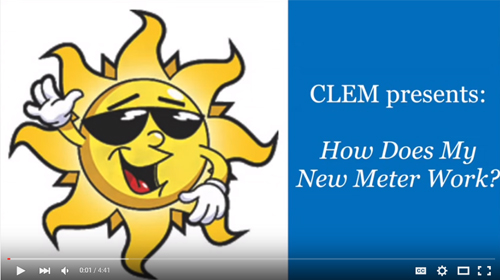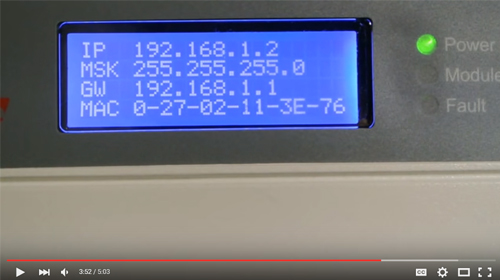System Components
Q: What are the components of my system?
A. The main components are:
- The solar panels, obviously — the coolest (hottest?) part of your solar energy system, and the most visible. (Scroll to the end for more panel information.)
- The inverter, usually in your basement or on the outside of your home. (Systems with micro-inverters or AC panels do not have this type of inverter.) The inverter converts the DC electricity from your panels into AC electricity for use in your home. The inverter communicates with the inverter company’s monitoring website, giving you easy online access to your production information in real-time, and historically. (Scroll to the last question for more inverter information.)
- Two “data over power lines devices” — small but important boxes we install next to your inverter and near your Internet router, to allow your system to “talk” to your online monitoring system.
- The production meter, which looks more like a traditional utility meter, and tracks your total solar production. This is also called a revenue-grade meter as it is considered the most accurate solar meter. (Rhode Island Renewable Energy Growth participants have a generation meter, which is essentially a production meter.)
- Your utility meter, usually installed on the side of your house, and replaced by the utility after your panels went up and before you turned on your solar energy system. (REG participants do not have their original meter replaced.) Read on for more on your meter.

(Note: It’s not your imagination — This video also appears on the Turning On & Off page.)
Q. How does my new utility meter work?
Note: You can also view this information on our Energy Miser blog.
A. Depending on where you live and which solar incentive programs you participate in, your utility (or your solar company) probably installed a meter on the side of your house, after your panels went up but before you turned on your solar energy system. They may have added a second meter, or replaced the one you had. As of this writing, the three main types of “solar meter” are:
- Net meter
- Bi-directional meter
- Dual metering
People who get “Net Metering” from their utilities (the majority of solar owners today, although that is changing) have one of the first two types of meter, which replaces the original, traditional utility meter.
Solar owners in Rhode Island’s Renewable Energy Growth (REG) program keep their traditional utility meters, and have a dual meter added to the house. These may eventually be used in Massachusetts, too, since an REG-type program is being developed to replace the SREC incentive program in 2018.
Here’s how each type of meter works, generally speaking:
Net meters show the net consumption of power in the household. It does not tell you how much solar electricity you pushed out to the grid, or how much “regular electricity” you took in from the grid. It indicates the difference between the two, or the “net usage”. The cool thing is that your net meter actually runs backwards if you are producing more solar energy than you are using at that point in time.
The net meter has two displays or registers, but only one of them relates to your electricity. The first register shows all 8s and simply means the meter is functioning properly. If something other than an 8 is shown, contact your electric company.
The second register shows your net usage, and is what the electric company uses to determine how much you owe on your electric bill, or if you have generated a credit. If you used 100 kWh of energy but generated 60 of those with your solar system, the net meter will show 40.
Bi-directional meters have three display screens.
One is a test screen where all lights are on. The second shows power coming in from the grid, and the third shows power going out from your solar into the grid.
Typically, the screen notation with 001 shows power coming in, and 002 shows power going out. Other meters use DEL or DL, and REC or RC to indicate which way the electricity is flowing. Ask your electric company to explain your screens when they install your meter.
In a dual metering situation, you have two separate meters that do not communicate.
Your original utility meter continues to tell you how much electricity you are taking from the utility. This is your usage meter. A new, second meter measures how much solar electricity you send to the utility. This is called a production meter or a generation meter.
Both meters are tied to your electric company account.

Q. What do the screens on my SolarEdge inverter mean?
A: It’s easier to walk through the many screens on your SolarEdge inverter in this video:

Q: Where can I find product information on my solar panels and inverter(s)?
A. Here are spec sheets for the panels and inverters we’ve primarily been selling the past few years. Sorry, we can’t provide spec sheets on all the equipment we’ve sold over the years. If you need to double-check what equipment you have, consult the Statement of Work section of your installation agreement.

